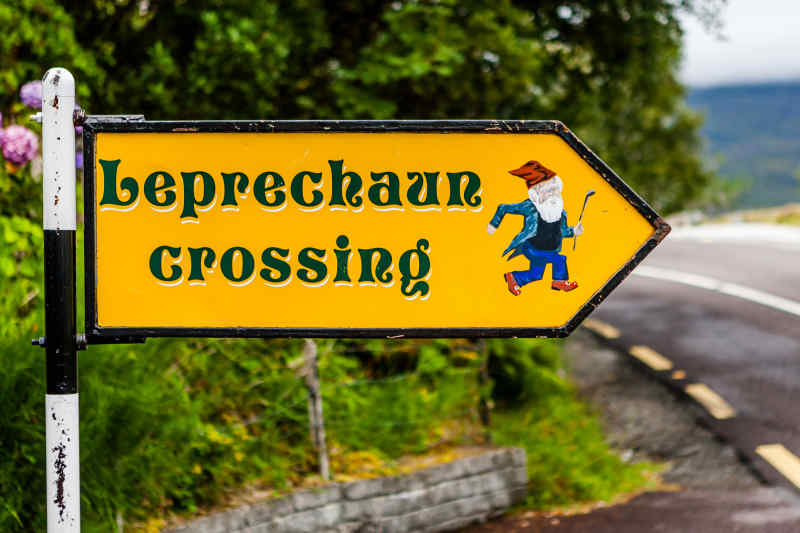By Amanda Little
Chores would mysteriously complete themselves, livestock would be healthy, and shoes and clothes would stay mended to those who paid respects to the fae living with them, or so says the stories of hundreds of countries across the world. Here are some prominent elf (not on the shelf) figures in mythology throughout cultures spanning the globe.
View vacation packages >
(trips include flight, hotel & excursions)
Hobgoblins • England
This charming little spirit was popular throughout old England, and was said to help out around the house until the spread of Christianity, when it gained a wicked reputation. Similar to Brownies, this hairy little men played pranks, could shapeshift, lived alongside humans in their homes, and completed chores like dusting and ironing if food was left out for them.
Haltija • Finland
Finland had a small army of haltija variations, but they almost always guard somebody or protect something against all evils and harm. Some guard specific humans, some become protectors of rivers or lakes, while the kalman vaki, "death folk," guard entire graveyards. The haltija that guard homes takes care of the house as well as the people in it, and everyone in the family treats him with respect.
Leprechauns • Ireland
This popular legend is known as an incorrigible prankster who will do anything to keep humans away from their pot of gold. There are many stories of humans hearing Leprechaun's working on the tiny gold shoes they make for fairies, and try to get the fairy cobbler's gold for their own, only to be tricked out of it.
Alven • Netherlands
The incredibly light and harder to spot Alven are water fairies in the Netherlands, and can fly! Though they don't have wings, they encase themselves in bubbles and travel along on wind. They are said to sometimes shift into otter form, but only to defend their homes against humans trying. While they can be found in any body of water, it is said the River Elbe is their true home.
Brownie • Scotland
While the Brownie is Scottish in origin, it seems to be a fairy that immigrated, because lore of these helpers is found all over Europe and America. It’s said a Brownie picks a caring family and aids them in their chores, but only at night while everyone is asleep. Some legends say brownies also have the ability to shapeshift like their hobgoblin cousins, into roosters and other domestic animals.
Manitou • Native American
Manitou is more than just fae or a household helper. It’s a life force among Native American tribes, and usually split into two categories: good spirits and bad spirits. It embodies every living thing, from rock to creatures to the environment, and is omnipresent. Shamans work with a variety of Manitou to help heal, guide, and hold onto their traditional way of life. It’s a way for them to connect to their Creator.
Menehune • Hawaii
Polynesian myths claim there was a pygmy race called the Menehunes that were about two feet tall, had reddish skin, and were most easily spotted by their mops of unruly hair. Some ancient sites were said to be built by this race, who were reportedly renowned for their engineering prowess. They also served as guardians and guides for the people of Hawaii, and are affectionately called "little vanishing ones." Able to do everything from help build a home or canoe to finished chores and caring for livestock, the Menehune are offered sweets for the cooperation.
Domovoi • Russia
The Domovoi are tiny, bearded, hairy men who live in the home of the family they choose to protect. Some lore says they actually take on the appearance of the current or former owner of the house, which is why their names are similar to deduska, which means grandfather. There have even been stories of a homeowner being seen in front of their house when the true human was asleep in their bed, but their voice is hollow and harsh. So long as a family leaves gifts of milk, porridge, tobacco, salt, and bread, the Domovoi will take care of the house.
Kobolds • Germany
Similar to the Cornish Knockers, the usually invisible kobold perform a range of tasks, from guarding homes like a hobgoblin, living in mines, or sailing constantly on a ship of their choice. They're said to be able to take the form of a human, a candle, an animal, or fire. House kobolds are said to appear wearing the clothes of the children who live there, while mining kobolds are hunched and ugly. Sailing kobolds wear sailors clothing and smoke pipes. They all play malicious tricks if disrespected, but care for anyone in their home, mine, or ship if they are properly respected.
Huldufolk • Iceland
The Huldufolk, or the "Hidden People," of Iceland are so prevalent, government building projects have been changed or even cancelled entirely to prevent damaging the rocks where folklore says they live. Disrespecting or harming the huldufolk is a dangerous crime because of their odd strengths and powers. They all wear grey clothes, have black hair, and dislike churches, crosses, and electricity.
Devas • Persia
Following the bright lights dancing through the forests of Persia and Greece could be dangerous, because you may be following a Deva. These nature spirits can look like lanterns of other humans, but really these fae are just part of Mother Nature herself, and live among all natural things.
Goblin • France
Found throughout most of European folklore with wildly conflicting stories, the Goblin is thought to originally come from France. They are almost always small, ugly, greedy, and their temperament ranges from mischevious to pure evil. Its said they have a hunger for gold and jewelry, and some stories even say they have magical abilities like fairies or even demons.
Tomte • Scandanavia
These gnome-like creatures in Scandanavia are tiny with red hats and long white beards, and are very often associated with winter solstice, and eventually Christmas. The Tomte is very similar to the Norwegian Nisse, and posses incredible strength for their size. While they care for farms and homes, they are easily offended and their payback can range from small pranks to killing livestock and spreading disease throughout harvests. Lore says that horses are Tomte's favorite animals, and that healthy horses denoted the presence of a happy Tomte. It’s even said that braids found in a horses mane are a gift from them, and undoing it would mean misfortune. All accounts claim that a bite from a Tomte is poisonous and incurable.
Gremlin • USA
These pesky little things came about much later than many of the other fae, and they're similar to goblins. Gremlins really started popping up around WW II, and the myth was spread throughout airmen, who claimed these buggers were sabotaging aircraft. Gremlins were said to like getting into all sorts of trouble messing with the mechanical and electrical components of planes, placing them among the first mythological creatures that had a place in a modernizing world.
Coblyn • Wales
The Coblyn is a form of knocker sprite, who are said to knock on the inside walls of mines to warn humans about that shaft's imminent collapse. Some miners argued that knockers were malevolent, claiming their knocking caused the cave-ins, but others would leave food out for the sprites because they believed the sprites were trying to save them. And still more claim the knockers were just playing pranks, well-meaning but effectively dangerous.















